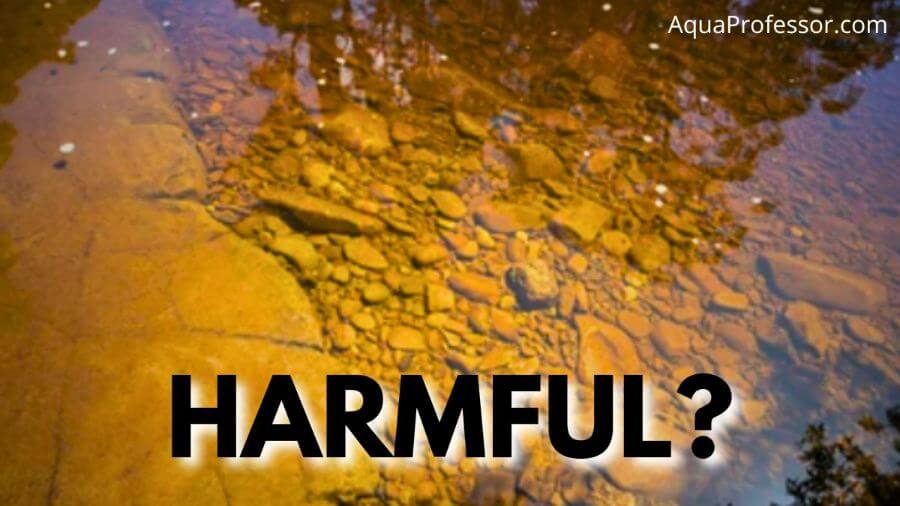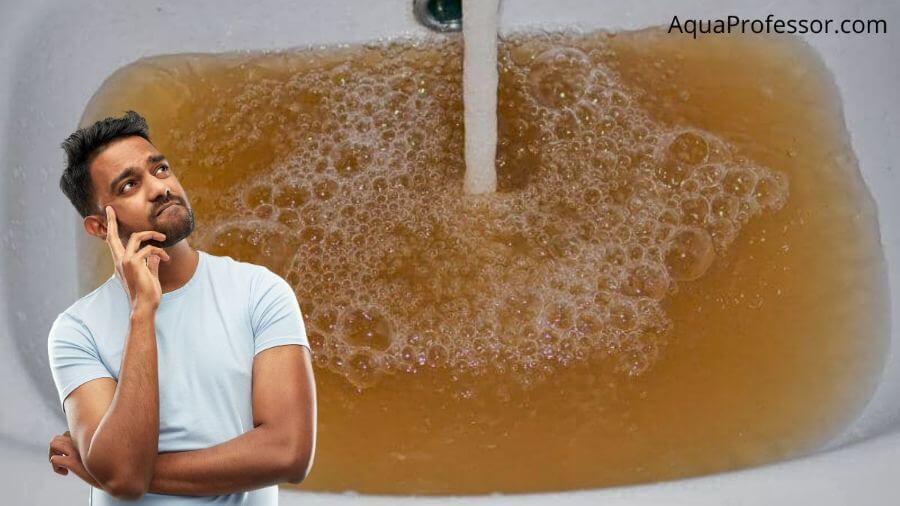Is your water getting light yellowish-brown with an earthy taste? It can be tannins!
Tannins are a type of organic compound that arise from the fermentation of vegetation. Tannins are commonly observed in groundwater sources in low-lying regions, such as marshes, swamps, and coastal areas.
They aren’t dangerous but can stain on fabrics and laundry, so you would want to remove them.
Continue reading to know everything about tannins in water.
🔍Are Tannins In Water Harmful?

No, tannins in water aren’t harmful. Hence, EPA (Environmental Protection Agency) doesn’t classify them as primary contaminants.
However, tannins in water can cause aesthetic effects such as:
Although tannins from water are not harmful bacteria, they can create conditions that favor bacterial growth or indirectly impact water quality, leading to potential health risks.
Some ill effects related to the presence of bacteria in tannin-rich water include:
🤔What Causes Tannin In Water?

The best way to understand how tannin occurs in water is to recall how we make tea. First, we take a cup of clean water. As we add tea leaves or dip a tea bag, the water color changes to brown or black.
More specifically, tannins in water can be caused due to the following:
Additionally, rainwater runoff from agricultural fields and orchards carries tannins from decomposing organic materials in the soil, including peaty soil, into nearby streams, rivers, and lakes.
This process contributes to an increased amount of tannins in surface water supplies, making proper treatment and filtration methods essential for treating tannins from water and maintaining water quality.
Also Read: Why I Have Brown Sludge In Water Softener Tank?
🤷How Do I Get Rid of Tannins in My Well Water? (Tannin Removal Steps)

Surface water supplies, like lakes and rivers, can be naturally rich in tannins due to surrounding vegetation and runoff. Proper water treatment systems and filters are essential for maintaining water quality and reducing the potential risks of tannin-rich water.
However, before removing tannins from your well water, confirming their presence and distinguishing them from iron is essential.
💡Did you know?
One tell-tale test is to fill a clear glass with water and let it sit undisturbed for several hours. If the water turns yellow or brown and the color does not settle at the bottom of the clear glass, it’s likely due to tannins. For a comprehensive evaluation, consider using Tapscore’s Yellow Tap Water Test.
Once you’ve confirmed the presence of different tannins in your water, you can explore the following methods to remove them:
💁🏻♂️Tannins In Water: FAQs
What does tannin do to your body?
From a water quality standpoint, tannins in drinking water do not pose any significant health risks.
However, tannins in food can lead to adverse health effects such as blood coagulation and hypotension. Tannins have been found to have various physiological impacts, including the acceleration of blood clotting, reduction of blood pressure, decrease in serum lipid levels, induction of liver necrosis, and modulation of immune responses.
Will a carbon filter remove tannins?
Activated carbon filters can effectively adsorb and remove tannins from water; however, they are typically used with other water treatment methods to remove tannins and other contaminants.
How to test for tannins in well water?
Here’s how to test for tannins in well water:
1. Fill a transparent glass with water.
2. Let it lie overnight.
If the color sinks to the bottom of the glass, it’s iron and manganese in water and not tannin.
If the color’s intensity is unaltered, tannins are most likely to blame.
You can also use DIY test kits that involve color-changing reagents or send a water sample to a certified laboratory for more accurate analysis.
What is an acceptable level of tannins in drinking water?
Tannin is not currently classified as a primary contaminant by the EPA. Therefore there is no established data on acceptable levels for this substance. However, it may result in aesthetic issues like staining and discoloration, so you might use RO or carbon filters to remove it.
Is it safe to swim in water with tannins?
Swimming in water with tannins is generally safe, as tannins are non-toxic to the skin. However, high concentrations of tannins in your water may cause water discoloration and reduced visibility, which can concern some swimmers.
Adarsh is a Health & Nutrition Sciences graduate with expertise in environmental health. He is associated with ventures like Glacier Fresh Filter and Simpure Filter Systems. Through Aqua Professor, he intends to provide helpful information to every home to help them make smarter decisions.
